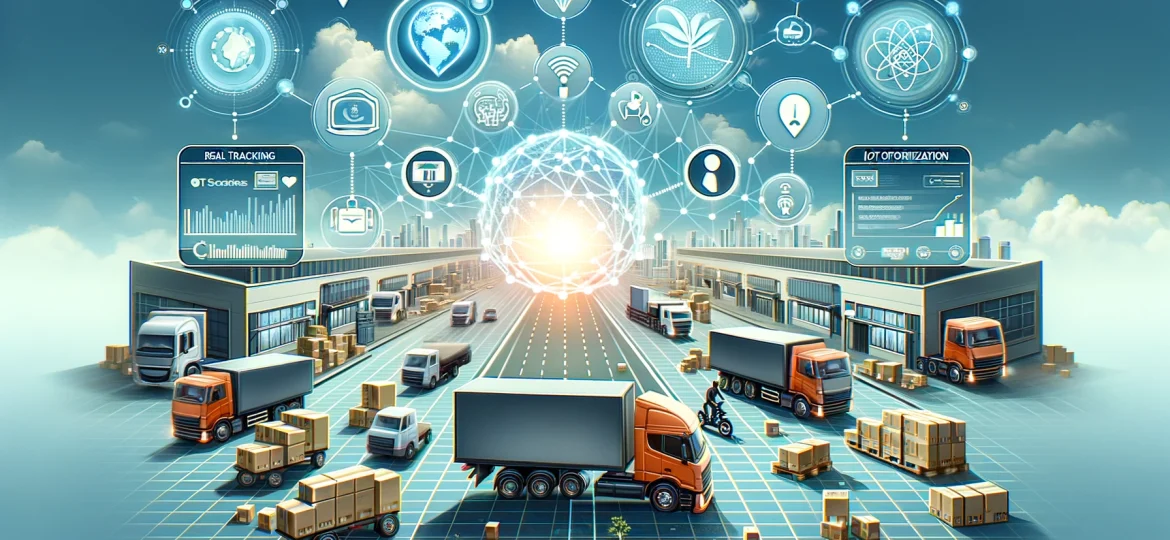
The food distribution industry is undergoing a significant transformation, driven by advancements in technology. From improving efficiency to enhancing transparency, technology plays a crucial role in modernizing distribution processes. Here’s how leveraging technology can optimize your food distribution strategy.
1. Inventory Management Systems and Real-Time Tracking
Effective inventory management is vital for ensuring the timely availability of food products. Modern inventory management systems (IMS) offer several benefits:
- Real-Time Tracking: Monitor stock levels in real time to prevent overstocking or stockouts. This ensures that products are available when needed and reduces waste.
- Automated Reordering: Set up automated reordering processes to replenish inventory based on predefined thresholds, minimizing manual intervention and errors.
- Data Analytics: Use data analytics to predict demand patterns, optimize stock levels, and make informed decisions about inventory allocation.
2. Blockchain for Traceability and Transparency
Blockchain technology is revolutionizing the way food products are tracked and traced throughout the supply chain:
- Enhanced Traceability: Blockchain enables the recording of every transaction and movement of food products on a secure, immutable ledger. This improves traceability from farm to table.
- Transparency and Trust: Consumers and stakeholders can access verified information about the origin, handling, and journey of food products, fostering trust and confidence.
- Regulatory Compliance: Blockchain helps ensure compliance with food safety regulations by providing a transparent and auditable record of the entire supply chain.
3. Digital Platforms for Order Processing and Customer Relationship Management
Digital platforms streamline order processing and enhance customer relationship management (CRM):
- Online Order Processing: Simplify the ordering process for retailers and distributors through user-friendly digital platforms. Automate order confirmations, invoicing, and payment processing to reduce administrative overhead.
- CRM Integration: Use CRM systems to manage relationships with distributors, track interactions, and provide personalized service. This can lead to better customer satisfaction and loyalty.
- Sales Analytics: Leverage digital platforms to gather and analyze sales data, identify trends, and optimize your distribution strategy.
4. Internet of Things (IoT) for Monitoring and Control
IoT devices offer real-time monitoring and control capabilities, enhancing the efficiency and reliability of food distribution:
- Temperature and Humidity Monitoring: Use IoT sensors to monitor the temperature and humidity conditions of storage and transportation environments. This ensures that perishable products are kept within safe conditions, reducing spoilage.
- Fleet Management: Implement IoT-enabled fleet management systems to track the location, status, and performance of delivery vehicles. Optimize routes, reduce fuel consumption, and improve delivery times.
- Predictive Maintenance: Use IoT data to predict and prevent equipment failures, ensuring uninterrupted operations and reducing downtime.
5. Artificial Intelligence (AI) and Machine Learning (ML) for Optimization
AI and ML technologies can optimize various aspects of food distribution, driving efficiency and improving decision-making:
- Demand Forecasting: Use AI and ML algorithms to analyze historical sales data, market trends, and other factors to accurately forecast demand. This helps in optimizing inventory levels and reducing waste.
- Route Optimization: AI-powered route optimization tools can determine the most efficient delivery routes, reducing fuel consumption, delivery times, and operational costs.
- Quality Control: Implement AI-driven quality control systems to detect anomalies in product quality during the distribution process. This ensures that only products meeting quality standards reach the consumers.
6. Cloud Computing for Scalability and Collaboration
Cloud computing offers scalable and collaborative solutions for food distribution businesses:
- Data Storage and Access: Store and access large volumes of data securely on the cloud, ensuring that information is always available and easily retrievable.
- Collaboration Tools: Use cloud-based collaboration tools to facilitate communication and coordination between different stakeholders in the supply chain, from suppliers to distributors to retailers.
- Scalability: Cloud services can be scaled up or down based on demand, providing flexibility to handle peak periods without significant investment in physical infrastructure.
Conclusion
Technology is reshaping the food distribution industry, offering numerous opportunities to enhance efficiency, transparency, and customer satisfaction. By integrating advanced inventory management systems, blockchain, digital platforms, IoT, AI, and cloud computing into your distribution strategy, you can stay ahead of the competition and meet the evolving demands of the market. For expert guidance on incorporating technology into your food distribution agreements and navigating the legal complexities, contact Juris Law Group for a free consultation.
